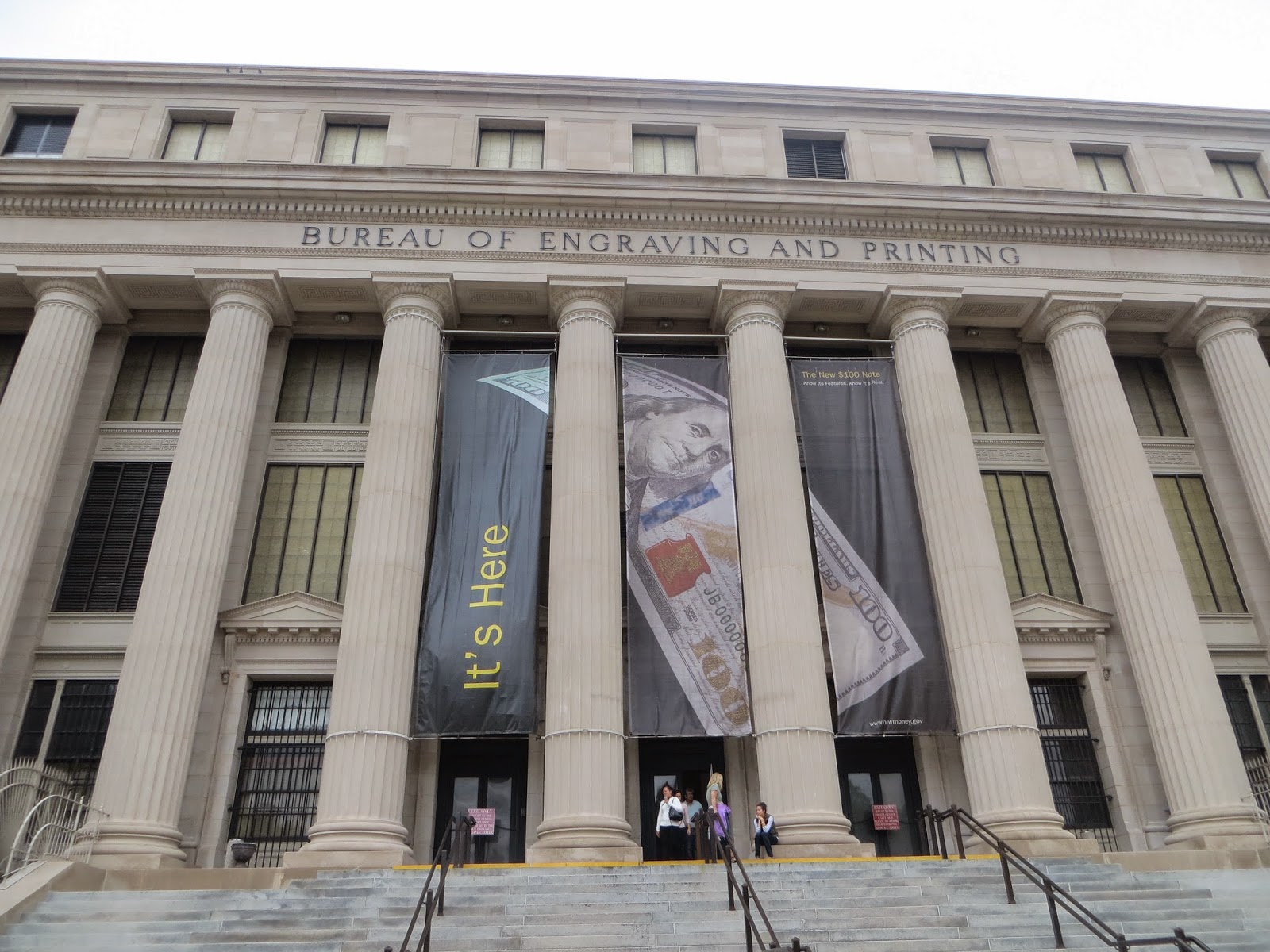We lined up at the ticketing entrance by 9:00 AM, as recommended. Because of the tour's popularity, visitors are advised to show up early at the ticket booth, which closes when all of the daily tickets have been distributed.
As I expected, all parts of this building were staffed heavily with security guards. One young Boy Scout in the line ahead of us was separated from his group, and he and his belongings were thoroughly searched. He looked completely terrified by the time he was cleared and reunited with the rest of his group.
 |
| How money is printed |
Our fascinating tour featured the various steps of currency production, beginning with large, blank sheets of paper and ending with wallet-ready bills. As the U.S. Government's security printer, the Bureau of Engraving and Printing is responsible for the design, engraving, and printing of all U.S. paper money. A world leader in printing technology, the Bureau also produces White House invitations, Treasury obligations, and other U.S. securities.
The first government notes were produced by a private firm, then trimmed and separated by hand at the Treasury. Gradually, all facets of currency production were assumed by the Bureau. The Bureau moved to its present site in 1914 and in 1991 a second currency production facility was opened in Fort Worth, Texas. All of our dollars come from one of those two places.
Though new printing, production, and examining technologies have brought the Bureau of Engraving and Printing into the 21st century, the Bureau's engravers continue to use some of the same traditional tools that have been used for hundreds of years.
 |
| $1,000,000 in $10 notes |
 |
| Glass tube of shredded (retired) $100's |
On our tour we learned that there are several easy-to-use security features to help people check their U.S. money:
1. Color-shifting ink: Look at the numeral in the lower right corner on the face of the note. When you tilt the note up and down the color-shifting ink changes color from copper to green.
2. Watermark: Hold the note up to the light and look for the watermark, or faint image, similar to the large portrait. The watermark is part of the paper itself and it can be seen from both sides of the note.
3. Security thread: Hold the note up to the light and look for the security thread, or plastic strip, that is embedded in the paper and runs vertically on one side of the portrait. The thread is visible from both sides of the note and will glow when held under an ultraviolet light.
These three features are difficult for counterfeiters to reproduce well, and therefore they often don't try. Instead they hope that cash handlers and the public will not check their money.
 |
| Bob, at 6'2" is about $1,800,000 tall (in $100's) |
Next: Our final adventure in Washington, D.C. - the Washington Monument





No comments:
Post a Comment